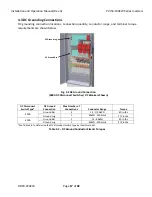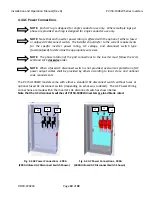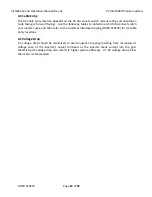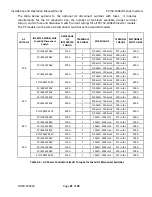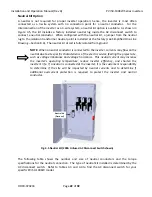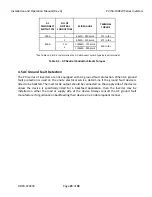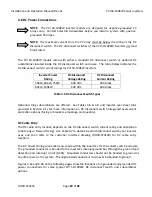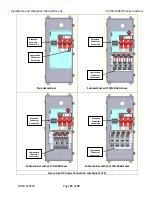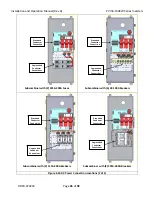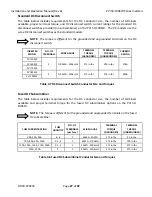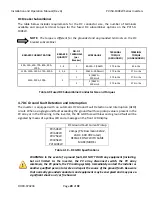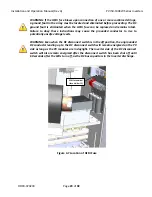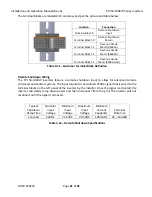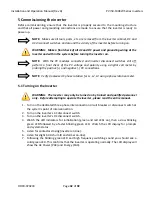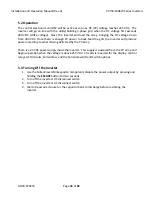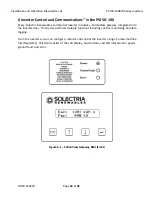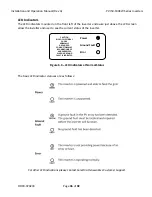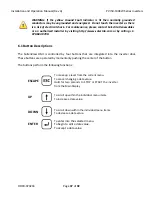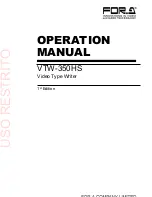
Installation
and
Operation
Manual
(Rev
A)
PVI
50
‐
100KW
Series
Inverters
DOCR
‐
070233
Page
22
of
92
Neutral
Kit
Option
A
neutral
is
not
required
for
proper
inverter
operation;
hence,
the
inverter
is
most
often
connected
as
a
3
‐
wire
system
with
no
connection
point
for
a
neutral
conductor.
For
the
interconnection
of
the
inverter
as
a
4
‐
wire
system,
a
neutral
kit
option
is
available.
As
shown
in
Figure
4.5,
the
kit
includes
a
factory
installed
neutral
lug
inside
the
AC
disconnect
switch
to
connect
a
neutral
conductor
.
When
configured
with
the
neutral
kit,
a
jumper
from
the
neutral
lug
to
the
isolation
transformer
neutral
point
is
installed
at
the
factory
(see
Simplified
One
‐
Line
Drawing
–
Section
8.4).
The
neutral
kit
circuit
is
fully
isolated
from
ground.
NOTE:
When
a
neutral
conductor
is
connected
to
the
inverter,
currents
may
flow
on
the
neutral
due
to
site
specific
characteristics
of
the
electric
service
feeding
the
project
site,
such
as
voltage
imbalance
and
voltage
harmonics.
This
neutral
current
may
increase
the
inverter’s
operating
temperature,
reduce
inverter
efficiency,
and
shorten
the
inverter’s
life.
If
a
neutral
is
connected
at
the
inverter,
it
is
the
customer’s
responsibility
to
determine
if
the
site
will
be
impacted
by
neutral
currents
and
to
determine
if
additional
overcurrent
protection
is
required
to
protect
the
inverter
and
neutral
conductor.
Fig.
4.5
Neutral
Kit
(200A
Unfused
AC
Disconnect
Switch
shown)
The
following
table
shows
the
number
and
size
of
neutral
conductors
and
the
torque
specifications
for
the
neutral
connection.
The
type
of
neutral
kit
installed
is
determined
by
the
AC
disconnect
switch.
Refer
to
Tables
4.3
and
4.4
to
find
the
AC
disconnect
switch
for
your
specific
PVI
50
‐
100KW
model.
Neutral
Kit
(Optional)










